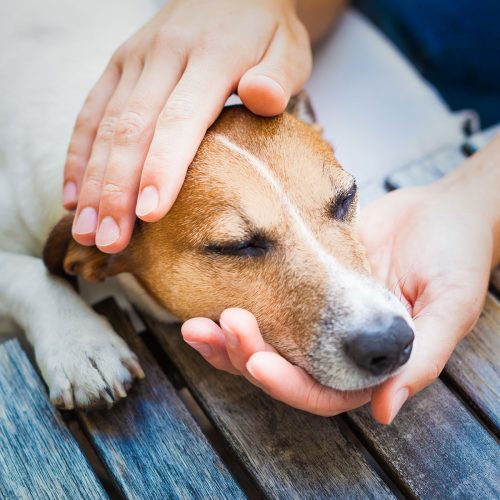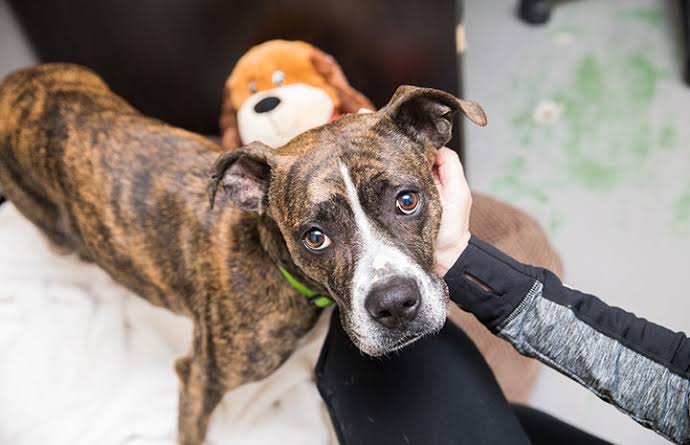So, pets, right? They’re these little creatures who can’t exactly sit you down and say, “Hey, I’m stressed” or “I’m happy.” But if you actually watch them—like, really watch—you’ll notice they’re talking all the time. Constantly. And most humans, myself included, completely miss it. Or worse, misinterpret it. And trust me, misreading your dog or cat can go from funny to “oh crap” in like, two seconds flat.
Honestly, I’ve made this mistake more times than I can count. My dog once froze, ears back, tail tucked under, and I thought, “Aww, dramatic much?” Nope. He was terrified of a thunderstorm. Totally embarrassing. But that’s kind of the point. If we don’t know how to read our pets, we’re just guessing—and that can lead to stress, anxiety, or even injuries.
Ears: Tiny Things with Huge Meaning
Okay, ears are not just for hearing. Sure, they pick up sound, but they’re also mood indicators. Tiny little mood meters on the side of their heads.
- Dogs:
- Forward/perked ears = alert, curious, maybe excited. Sometimes it’s “I smell something weird,” sometimes it’s “I’m ready for action.” Context matters, seriously.
- Flattened or pinned ears = fear, submission, or discomfort. Not just “being dramatic,” like I thought. More like, “Please don’t hurt me.”
- Rotating or sideways ears = confused, trying to figure out a sound, or just mildly curious.
- Cats:
- Forward ears = relaxed, calm, maybe focusing.
- Flattened ears = warning, aggression, or irritation. Usually paired with a swishing tail. If you see this, back off. Seriously.
- Twitching ears = hunting mode, agitation, or annoyance. Can’t tell alone—you need the rest of the body.
Story time: My cat once had ears pinned back and was creeping across the floor. I laughed, thinking, “Silly cat, dramatic again.” Nope. He was stalking a fly. Lesson learned: context is everything.
Eyes: Windows to Pet Emotions
You might think, “Eyes are just eyes.” No. They’re basically mood billboards.
- Soft, relaxed eyes = calm, happy, approachable. Usually comes with relaxed posture.
- Wide eyes / dilated pupils = fear, excitement, or sometimes aggression. But the body will tell you which. Wide eyes + relaxed posture = maybe just curious. Wide eyes + crouched body = scared.
- Staring = tricky. Dogs sometimes stare as attention or focus, but stiff posture + staring = warning.
- Slow blinking (cats) = trust, relaxation. Cat “kisses.” Blink back slowly if you want to bond.
Pro tip: Always pair eye signals with ears, tail, and posture. One cue alone can mislead you.
Tail: More Complicated Than You Think
Everyone thinks a wagging tail = happy. Not true. Big misconception.
- Dogs:
- High and wagging = alert, confident, maybe excited. Could be friendly, could be “ready for action.”
- Low/tucked = fear, submission.
- Slow wag = cautious curiosity, mild agitation.
- Full-body fast wag = pure excitement, happy vibes.
- Cats:
- Tail up, tip twitching = friendly, happy.
- Tail puffed = scared or startled.
- Slow swish or thump = annoyed.
Funny story: My dog once wagged his tail like crazy around a new dog. I thought “Yay, friendly!” Nope. Tail was stiff, high, tense. Big warning signal. Good thing I noticed before it escalated.
Posture: The Whole-Body Signal
Posture is where most humans fail. It’s not just ears or tail, it’s the whole picture.
- Relaxed posture = calm, approachable. Usually accompanied by soft eyes, wagging tail (maybe), relaxed ears.
- Crouched / low to ground = scared, submissive. Tail tucked, ears pinned, maybe trembling.
- Stiff / rigid = tense, alert, possibly aggressive. Could also be play alert, so check context.
- Rolling over / exposing belly = dogs: trust or inviting belly rub. Cats: more complicated. Could be comfort, play, or mild threat if swatting afterward.
Combining Signals: The Full Picture
Reading a single cue alone? Useless. You need the full picture.
- Pinned ears + tucked tail + wide eyes + crouched body = scared. Stay away.
- Tail up + ears forward + slow blinking = relaxed, friendly, maybe asking for attention.
- Wagging tail high + stiff posture + staring = warning. Could escalate to aggression if you ignore it.
Key takeaway: context and combination beat guessing every time.
Context is Everything
Seriously. Don’t just look at the body. Look at the environment.
- New person or stranger? Pet may act differently.
- Loud noise nearby? Stress mode.
- Just came from a bad experience? Watch behavior carefully.
Ignoring context is the easiest way to misread a pet.
Training Yourself to Observe
- Watch quietly for 5–10 minutes daily. No talking, just observing.
- Take notes or at least remember what signals correlate to which behaviors.
- Test gently. Approach slowly when unsure, see how your pet reacts, then adjust.
Common Human Mistakes
- Thinking all tail wags = happy. Not true.
- Ignoring multiple signals. One cue alone can lie.
- Projecting human emotions. Pets don’t feel or express exactly like us.
- Reacting too fast. Give space if unsure.
Why Understanding Body Language Matters
- Prevents injuries (bites, scratches).
- Helps with training by recognizing stress or readiness to learn.
- Deepens bond: pet feels understood and safe.
Example: After I started noticing my cat’s tail flicks, ear movements, and slow blinks, I realized I was stressing him during play. Adjusted my approach, and now he’s calmer—and so am I.
Quick Reference Cheat Sheet
| Feature | Signs | Meaning |
| Ears | Forward, pinned, twitching | Curious, scared, annoyed |
| Eyes | Soft, wide, blinking | Relaxed, alert, trust |
| Tail | Wag high, tucked, swish | Excited, fearful, annoyed |
| Posture | Relaxed, stiff, crouched | Calm, alert, scared |
Tip: context matters more than anything.
Final Thoughts
Pets talk constantly. You just need to pay attention, observe the full body, and add context. Mess up? That’s okay. We all misread sometimes. Adjust, learn, and bond. Your pet will appreciate it—even if they don’t say “thanks.”



